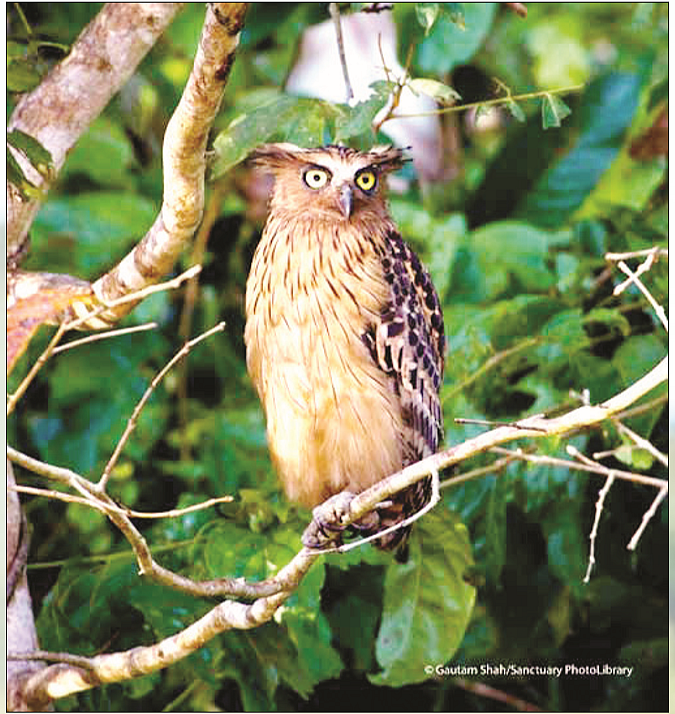Two hoots for the owl!
Body parts of the owl are often used to make amulets or lucky charms. Although trading in owls is prohibited, it is widely believed that the clandestine trade flourishes

India is said to have 33 different species of owls out of the 200-odd identified so far across the world. All of them are protected species and trade in them is prohibited.
But while the owl, a bird of prey, is worshipped because of its association with the goddess of wealth Lakshmi, it is also sacrificed to invoke good fortune. And international media reports have claimed that owls were available for sale in Delhi for a price. A report claimed three years ago that for a sum of eight thousand Rupees, an owlet was promised within 24 hours. A bigger full-grown owl was offered for Rs 20 thousand then.
While in the West the Owl represents wisdom, in parts of India the bird is associated with foolishness. Some feel that sighting an owl brings luck whereas some feel that it’s a sign of bad omen. However, one common observation has been that a white owl brings luck, whereas any other owl is a sign of bad omen. The hoot of an owl is always associated with spooky feelings, and sometimes as harbingers of death.
On the other hand, Laxmi, the Hindu goddess of money and wealth, rides an owl. Some people believe that if a white owl enters a home it is treated as a good omen by relating it to the possible flow of wealth or money into that home. It is also believed that the owls have magical properties which can ward off bad luck.
Owls have unique features that help them hunt insects, fish and small birds, reptiles and mammals. Most owls are nocturnal, which means they hunt at night. While some owls make their home in the hollow of trees, others may roost in an empty barn or abandoned building or a rocky area.
Owls can swoop through the air without making a sound. Their specially designed feathers are lighter and softer around the edges, so they can fly noiselessly.
The dominant feature however is their eyes – because they need to be able to see well both in daylight and the dark. Owl’s eyes are usually large and bright and close together so they can gather and reflect more light. They can also turn their head nearly all the way around thanks to a flexible neck with double the number of bones humans have so that they can see to the sides and behind while the body stays in the same spot.
The sixth World Owl Conference was held in Pune in November last year. This was the first time the conference was held in India. The conference was followed by an Indian owl festival.
• In owls, the females are generally larger than the males.
• Since, owls cannot move their eyes, they have to move their entire head to look around. Owls can turn their head to 180 degrees. This is possible because owls have an extra vertebra in their spine.
• The colour of the pupils of the eyes of the owls indicates the time they hunt. The owls having yellow eyes hunt during the day, those with dark eyes hunt during the day, and those with orange eyes hunt during the dawn and dusk.
• Owls do not have the sense of smell as well as the sense of taste.
• The ears of owls are not aligned evenly and so their sense of hearing is enhanced. They can even hear their prey moving beneath the snow and also hunt in complete darkness.
• Owls pair for life.
• The smallest owl is the Elf Owl which can grow up to 5 inches. The largest are the two Eagle Owls that can grow up to 29 inches with a wing span of 6 feet.
• A group of owls is known as a parliament, though most owls tend to be solitary.
Follow us on: Facebook, Twitter, Google News, Instagram
Join our official telegram channel (@nationalherald) and stay updated with the latest headlines